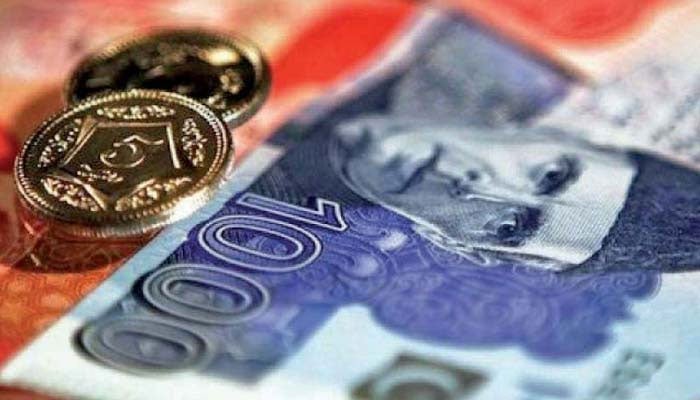“In the coming week, we see the rupee to be range-bound and vulnerable to news flows,” says Tresmark

- Rupee faces pressure from inflation, decline in reserves this week.
- Local currency closes at Rs285.37 against greenback on Friday.
- Rupee’s outlook to depend on dollar buying, selling next week.
KARACHI: The rupee is expected to hold a narrow range and hover around 285-286 against the dollar in the upcoming week as importers and exporters weigh the impact of mixed economic signals on the country’s currency, The News reported Sunday.
In the outgoing week, the local currency gained some ground against the greenback in the first three sessions as optimism surrounded the economy over the completion of the first International Monetary Fund (IMF) review and the decline in the current account deficit.
However, the rupee lost some of its gains in the last two sessions, as demand for dollars from importers increased and exporters remained reluctant to sell their foreign exchange holdings.
The rupee also faced pressure from rising inflation, falling foreign exchange reserves and uncertainty over the interest rate outlook.
The rupee closed at 285.37 against the dollar on Friday, compared with 285.97 on Monday, gaining 0.20% for the week.
“The rupee’s outlook for the coming week will depend on whether importers and businesses step in to buy dollars to meet their end-of-month demand as well as whether exporters, who are still hesitant, come to the market to sell their dollar holdings,” said a foreign exchange trader.
“We expect the rupee to trade in a range of 285-286 against the dollar next week unless there is any major positive or negative news flow.”
Tresmark, a financial data provider, said the rupee had not lost much ground over the previous two trading sessions. The real effective exchange rate (REER), which increased from 91.7 to 98.6, and the diminishing foreign exchange reserves, which decreased by $232 million, were the main causes.
“However, most analysts think the lion’s share of rupee weakness came as SBP did Sell Buy swaps to prop forward premiums and subsequently started buying dollars from the market to boost reserves. Despite lucrative premiums, exporters were not active in selling forwards,” it said in a weekly report.
“In the coming week, we see the rupee to be range-bound and vulnerable to news flows. Importers and exporters should just wait and see which comes earlier — positive or negative news flows.”
Pakistan’s forex reserves fell by $233 million to $12.302 billion in the week that ended on November 17. The reserves held by the State Bank of Pakistan (SBP) dropped by $217 million to $7.180 billion. Analysts said that was enough to cover less than two months of imports.
Even if recent statements from government officials have calmed market sentiment, Tresmark believes that they are still creating uncertainty.
“One of the biggest uncertain segments is interest rate. When CPI [consumer price index] inflation clocked in around 26% for October, the market went on a bond-buying spree predicting rates to come down,” it said.
“Subsequently, the increase in gas prices and the two consecutive SPI [sensitive price indicator] numbers of over 40% has cast solid doubts. Yields have consequently ticked up last week, and everyone is now looking for another round of data to project future inflation rates.”.
While most analysts don’t think of an increase in interest rates, they insist a no change will be akin to a hike, because the market has strongly factored in a cut. But a cut looks tricky if CPI comes above 30% (as is the market consensus), especially amidst a hawkish Fed and a unique interest rate trajectory in Turkey — in which they increased rates by another 5% on Friday to take it to 40%, it noted.
Pakistan expects to secure a tranche of $700 million from the IMF’s existing loan programme after completing a first review. The IMF executive board is expected to approve the staff-level agreement with Pakistan for the first review of the $3 billion stand-by arrangement early next month.
It is projected that Pakistan will get approximately $1.2 billion in financing from the multilateral partners. October saw a 91% reduction in the current account deficit (CAD) to $74 million compared to the same month last year, thanks to a rise in exports and remittances and a decrease in imports.
Despite a 61% month-on-month increase in the current account deficit in October, primarily as a result of a higher trade gap brought on by an increase in imports, analysts believe that the deficit for this fiscal year will be manageable because anticipated foreign inflows are likely to materialise. The CAD declined by 66% to $1.1 billion in the first four months (July-October) of the current fiscal year.













